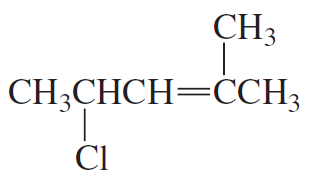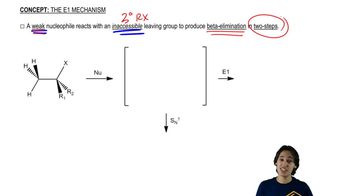Draw the major product obtained when an alkyl halide in [PROBLEM 9-83] undergoes an E1 reaction.
c.

 Verified step by step guidance
Verified step by step guidance Verified video answer for a similar problem:
Verified video answer for a similar problem:



 8:09m
8:09mMaster Drawing the E1 Mechanism. with a bite sized video explanation from Johnny
Start learning